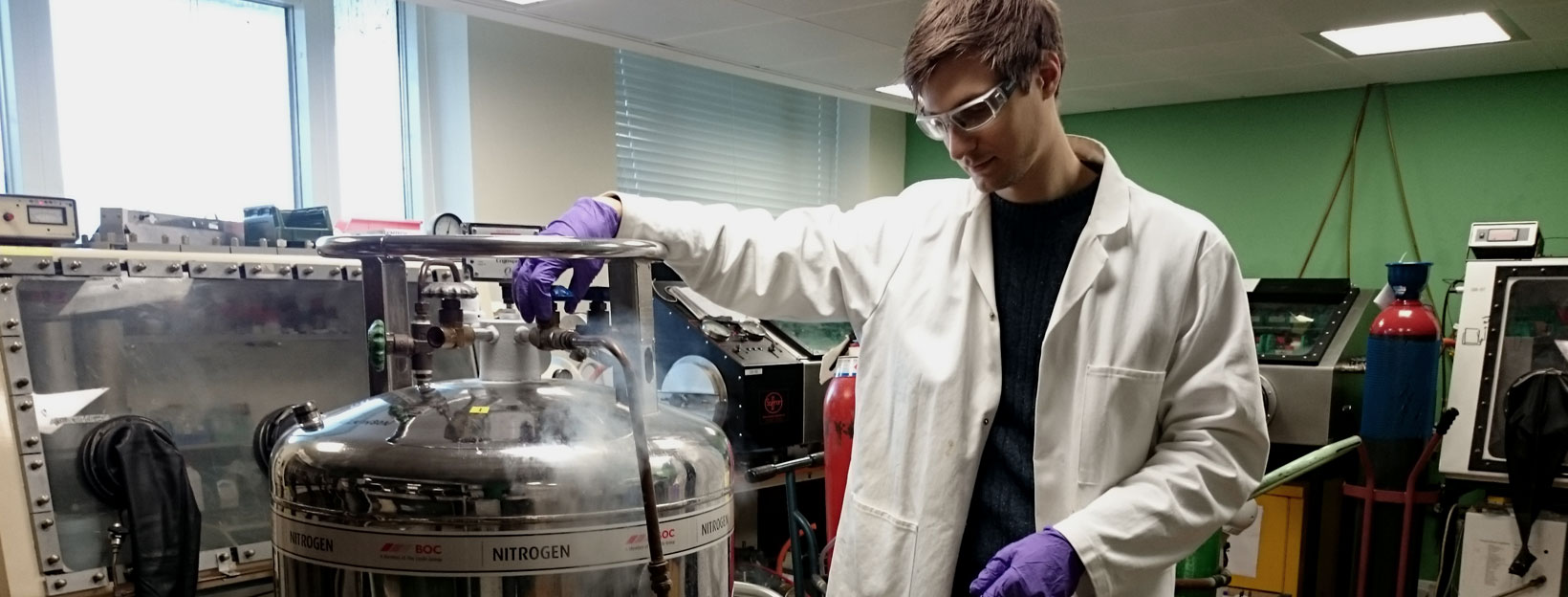
Visiting the chemistry lab
“Lena, what exactly is Nis’ PhD about?“ Every time someone asks me this question I try to hide the fact that I am actually not that interested in science in general. Instead I throw in words like “inorganic chemistry” and “batteries” and hope that the person who asked the question is actually not that interested either and just tried to keep the conversation going. Sometimes though, it happens that someone is genuinely interested in Nis’ PhD project and also somewhat of a science person. That’s when these conversations can get a bit awkward because I am not even able to explain briefly what my husband is doing all day in the lab.
For someone like me, who studied humanities and spent most of her studies in libraries, the laboratory looks like a dangerous place full of toxic substances, strange smells, and weirdly shaped glassware. It was about time to rethink my biased attitude towards Chemistry, so I decided to spend one morning in the lab with Nis to understand what his research is about.
Silicon as anode material in batteries
When Nis works at his fume hood, he aims at synthesising coatings that facilitate the use of silicon as an anode material in lithium-ion batteries. These are the batteries we use in our smart phones for example. At the moment the common anode material is graphite. In Nis’ project this is being replaced by silicon as it offers more capacity at the same weight. In other words, it would ultimately be possible to produce lighter batteries or store more energy at the same volume.
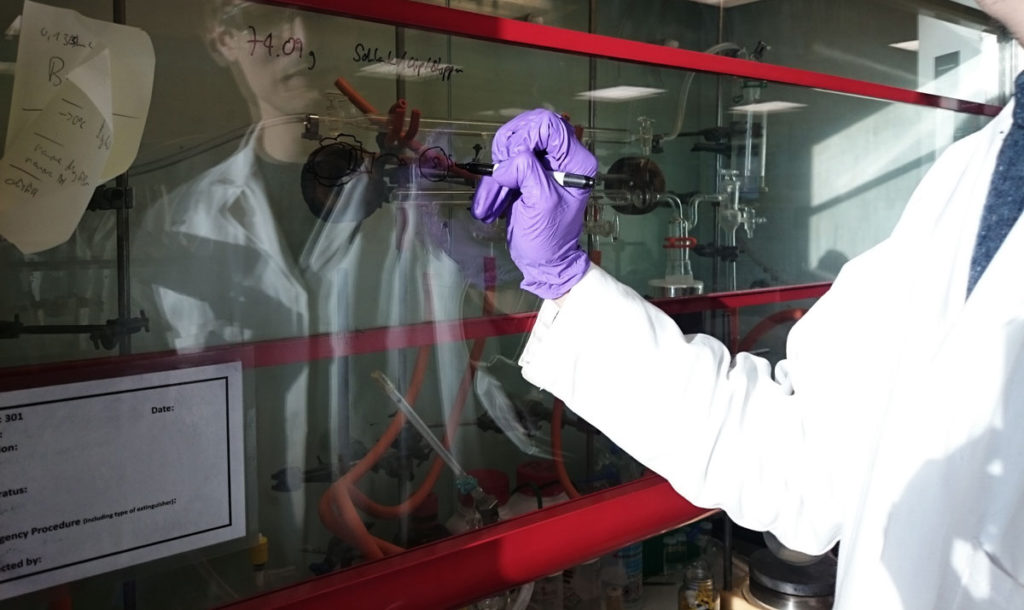
However, there are plenty of issues with silicon, for example it expands while discharging, which leads to decay and eventually to battery failure. If the material was treated with a suitable coating it may be possible to avoid this continuous decay. Exactly this kind of substance is what Nis tries to synthesise and analyse.
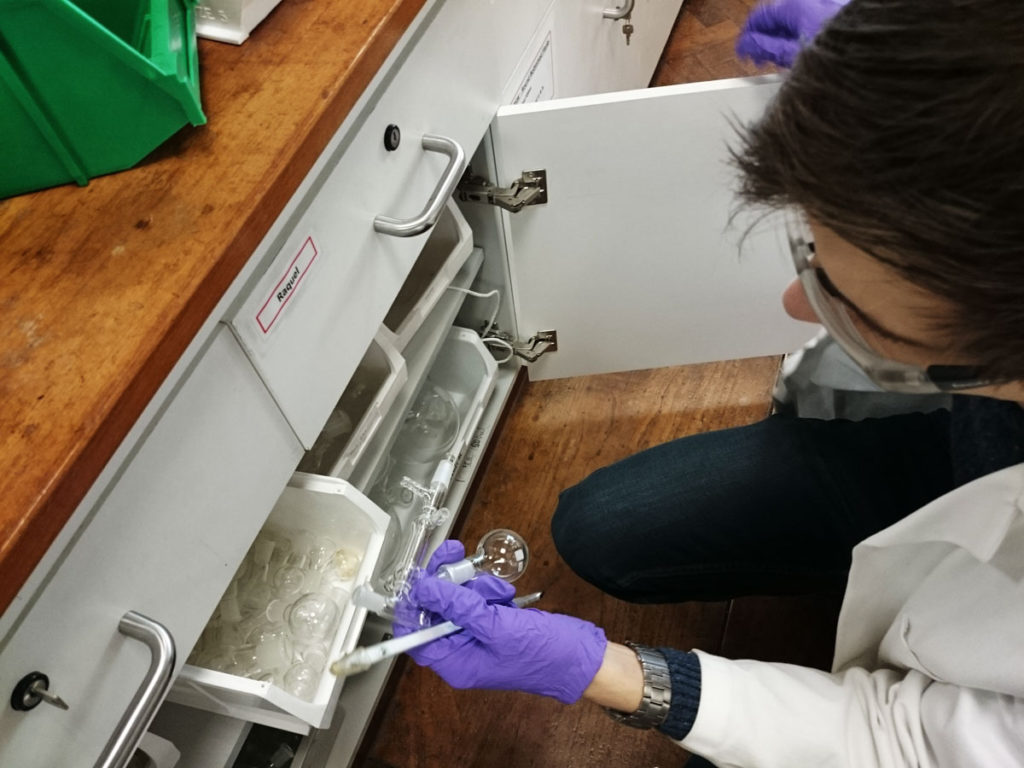
Inorganic synthesis amateurishly explained
The synthesis involves air-sensitive, inorganic materials which is why Nis uses a Schlenk line. It consists of an apparatus that allows working with materials that must not come into contact with oxygen or air moisture. When using the Schlenk line he can work under vacuum and inert atmosphere, which is normally dry nitrogen or argon gas.
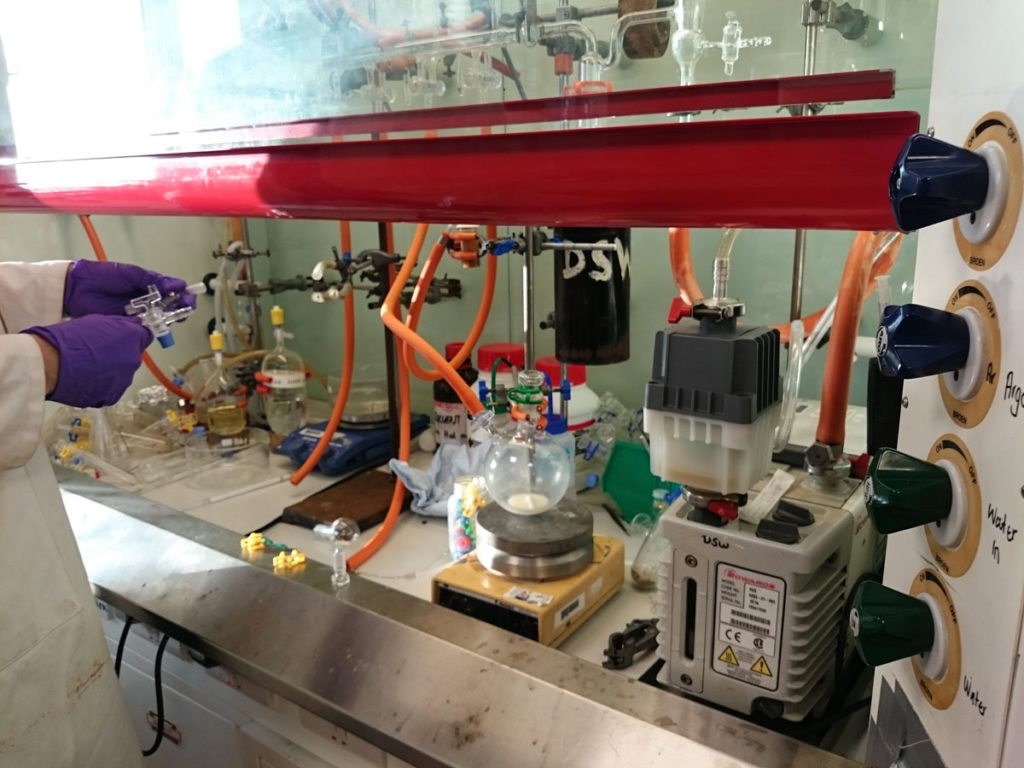
He also uses gloveboxes where he stores and weighs his starting materials under an inert atmosphere.

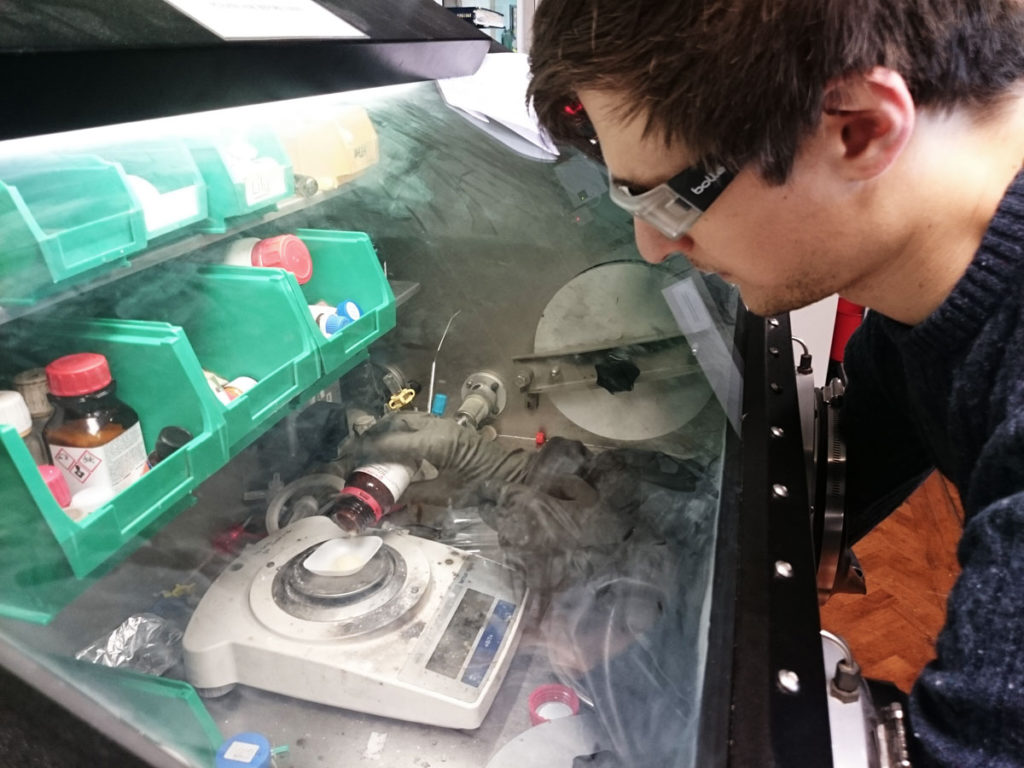
After the reaction the products are purified, for example through distillation, to receive the pure substance.
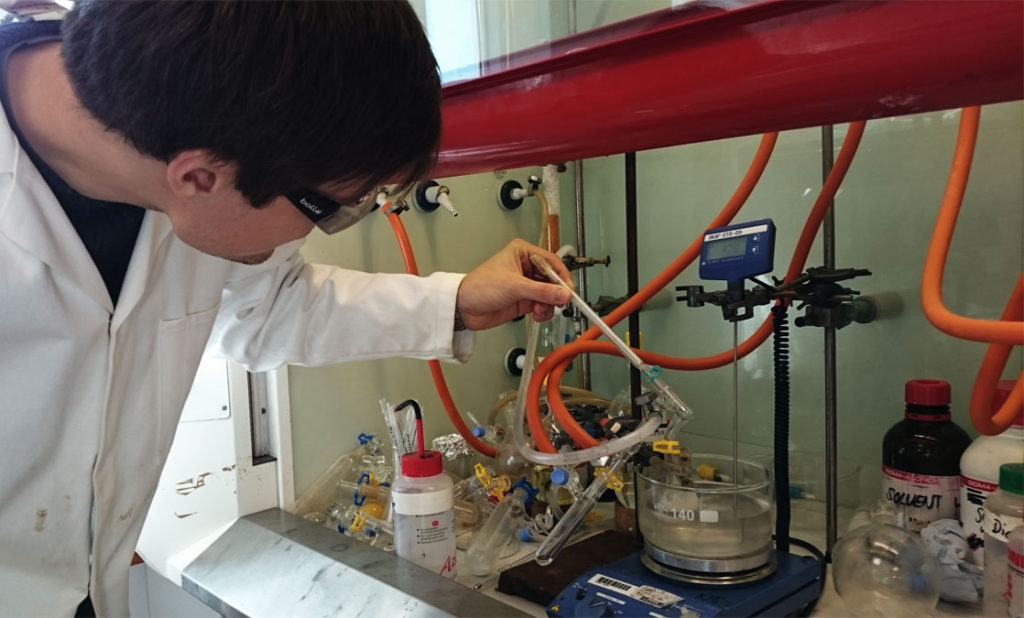
Standard analytic techniques like NMR (Nuclear magnetic resonance spectroscopy ) or IR (Infrared spectroscopy) help Nis to identify the purity and composition of his product. Sometimes he also uses an electron microscope which tells him more about the morphology of the materials obtained. This is a more exciting way to analyse the outcome of an experiment.
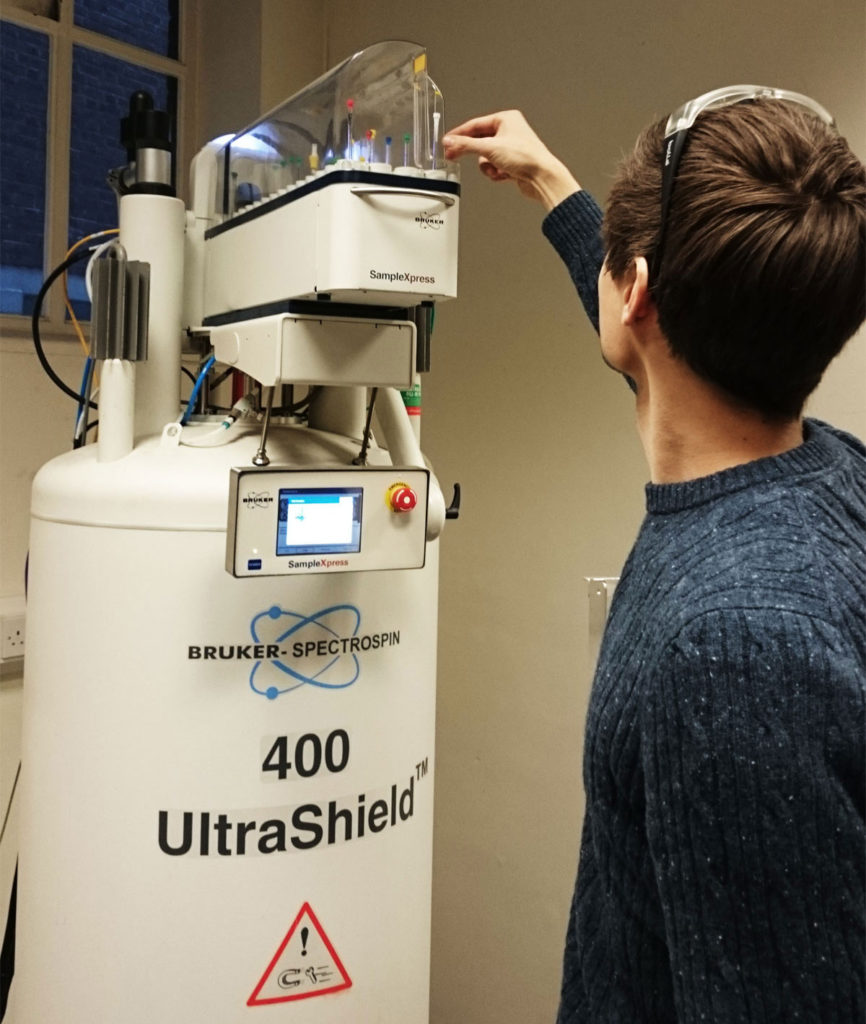
Better performance with silicon anodes in batteries
Moreover, Nis assembles coin cells and applies his product in these batteries to test the performance of his synthesised materials. Discovering new coatings for silicon is just one method to achieve a better performance of batteries with silicon anodes. He continuously discusses the best strategies to extend battery life by both chemical and physical alterations with his colleagues in Cambridge and other universities. Most of the technologies have not yet been investigated enough to find application at a larger scale. But in science many small steps over a long period of time will finally lead to a breakthrough.

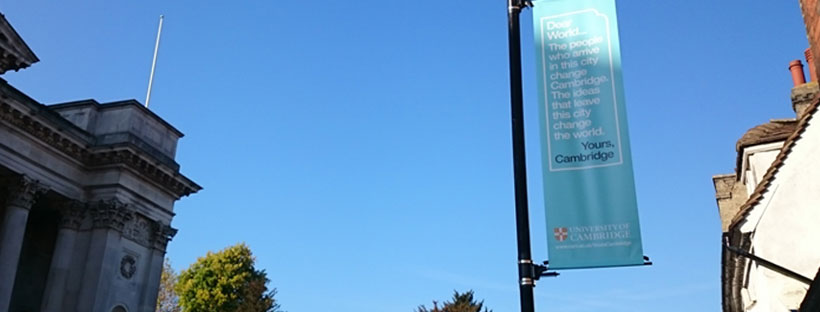


8 Comments
Heinrich Rudy
Das macht der Nis also …. die Ordnung in seinem Abzug erinnert mich an frühere Zeiten.
Tolle Artikel, auch die anderen 😉
Beste Grüße euch beiden
lena
Vielen Dank! Ja, in Nis’ Abzug siehts halt aus wie unter seinem Schreibtisch. 😀
Leah
Wow, wie viele Fremdwörter du schon gelernt hast 🙂 Ich bin stolz, dass du dich in die gefährliche Welt der Chemie gewagt hast – immerhin interessieren wir Geisteswissenschaftler uns doch für fast alles, oder? Keep on writing girl!
lena
Definitiv! Danke, Leah! 🙂
Angela Kneusels
Great ! Danke Lena!
Jetzt hab ichs auch verstanden,… 😉
lena
🙂 Happy to help!
Caro
Ich wünschte, mein Chemielehrer hätte so gut erklärt 😉
lena
Ich habe ja auch freundlicherweise die Strukturformeln und Reaktionsgleichungen weggelassen. 😉